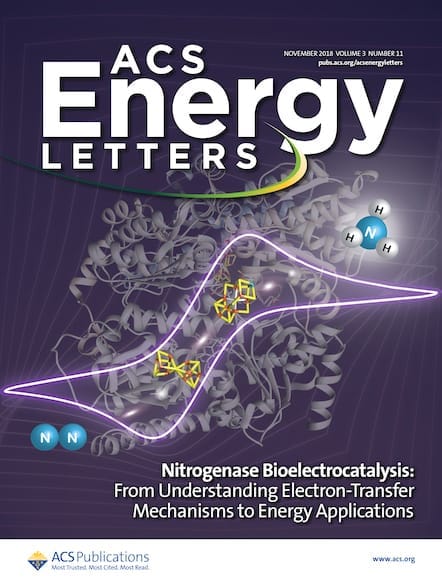A recent study uncovers the capabilities and challenges of lithium-ion batteries for high-power eVTOL vehicles, revealing crucial insights into advancing battery designs for sustainable air travel.

In the rapidly evolving world of advanced air travel, electric vertical takeoff and landing (eVTOL) vehicles stand at the forefront of innovation. eVTOLs (pronounced “ee-vee-tols”), also known as air taxis, are an emerging mode of transportation that offer several potential environmental benefits. Firstly, their vertical takeoff and landing capabilities allow them to operate in confined spaces, which can help alleviate traffic congestion on roads. eVTOLs are also powered by electricity, helping to both lessen air pollution and significantly reduce the carbon footprint associated with urban transportation.
Unlike traditional electric vehicles, eVTOLs require batteries that can handle exceptionally high discharge rates for operations like takeoff and landing. However, powering these futuristic crafts presents a significant challenge, particularly in the realm of lithium-ion batteries (LiBs). A recent study published in ACS Energy Letters provides critical insights into this area, exploring the performance and longevity of LiBs when subjected to high discharge rates, especially during eVTOL takeoff.
The researchers focused on imitating these conditions, simulating a 15C discharge pulse—a rate 15 times the battery's nominal capacity—followed by a lower-rate discharge. This approach offers a realistic depiction of battery demands during eVTOL operations. Their findings revealed that while LiBs can recover performance at lower rates, reapplying high rates leads to drastic cell failure. This highlights a significant challenge in eVTOL battery design, emphasizing the need for batteries that can both withstand these high-power requirements while providing stability over time. It also points to the necessity of developing tailored battery chemistries to address issues such as anode plating and cathode instability.

Lithium-Ion Battery Power Performance Assessment for the Climb Step of an Electric Vertical Takeoff and Landing (eVTOL) Application
ACS Energy Letters
DOI: 10.1021/acsenergylett.3c02385
View institutional access options for this journal.
The authors note that their research has led to a greater understanding of LiBs’ behavior under these extreme conditions, which is vital for advancing battery design and innovation for eVTOLs and other high-power applications. They also emphasize the need for identifying ways to repurpose these batteries in lower power applications after their service in eVTOLs. This will extend their lifecycle and reduce environmental impact, aligning with environmental sustainability goals.
This study marks a significant stride in understanding the complex demands of LiBs in high-power applications like eVTOLs, laying the groundwork for future innovations in battery technology and sustainable energy solutions. As eVTOLs continue to revolutionize air travel, such research will become increasingly crucial in maximizing the potential of these advanced vehicles.
Explore More Battery Research from ACS Energy Letters
Lithium Iron Phosphate Superbattery for Mass-Market Electric Vehicles
Jie Liao, Ryan S. Longchamps, Brian D. McCarthy, Feifei Shi*, and Chao-Yang Wang*
DOI: 10.1021/acsenergylett.3c0282
Building a Long-Lifespan Aqueous K-Ion Battery Operating at −35 °C
Liwei Jiang and Yi-Chun Lu*
DOI: 10.1021/acsenergylett.4c00098
Reversible Hydration Enabling High-Rate Aqueous Li-Ion Batteries
Leiting Zhang*, Franziska Kühling, Agnes-Matilda Mattsson, LisanneKnijff, Xu Hou, Gustav Ek, Thomas Dufils, Frederik Holm Gjørup, Innokenty Kantor, Chao Zhang, William R. Brant, Kristina Edström, and Erik J. Berg
DOI: 10.1021/acsenergylett.4c00224
Three-Dimensional Polymeric-Scaffold-Based Current Collector for a Lithium Metal Anode toward High-Energy-Density Batteries
Ju-Myung Kim, Hao Jia, Krishna Prasad Koirala, Dianying Liu, Ashley Simmons, Mark H. Engelhard, Ridwan A. Ahmed, Yuepeng Zhang, Chongmin Wang, Ji-Guang Zhang*, and Wu Xu*
DOI: 10.1021/acsenergylett.3c02752
In Situ Orthogonal Polymerization for Constructing Fast-Charging and Long-Lifespan Li Metal Batteries with Topological Copolymer Electrolytes
Kairui Guo, Shaoqiao Li, Jirong Wang*, Zhen Shi, Yong Wang*, and ZhigangXue*
DOI: 1021/acsenergylett.3c02422

